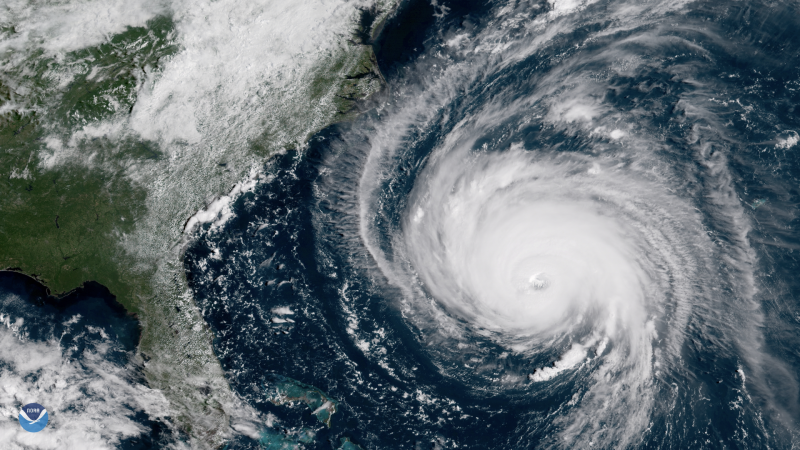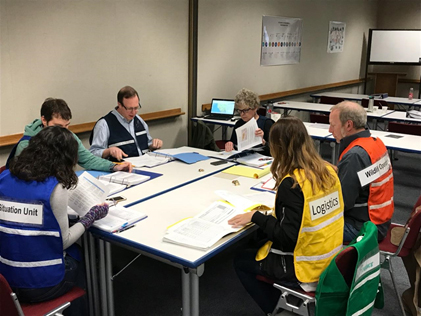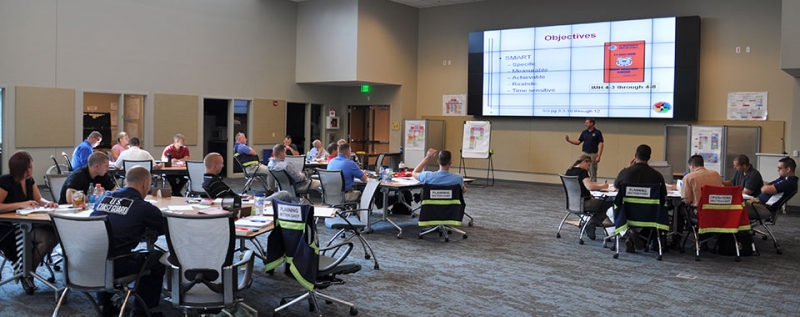
The OR&R Disaster Preparedness Program is one! Established in November of 2017, the DPP has made great progress in a small amount of time toward its mission to prepare the National Ocean Service and its partners to respond to and recover from pollution events and natural disasters. In this past year, the DPP developed a foundational strategic plan, expanded partnerships, and most importantly, worked closely with NOS staff and partners to improve our preparedness and response culture.
The foundational plan for the DPP centers around five goals:
- Capacity Building: Build NOS and partner capacity through delivering and facilitating trainings and exercises that increase readiness for hazard response and recovery operations, fostering a robust cadre of knowledgeable responders.
- Disaster and Emergency Event Coordination: Provide coordination and facilitate communication by connecting stakeholders.
- Continuous Improvement: The DPP ensures an optimal NOS response posture through rigorous emergency response evaluation and improvement.
- Regional Preparedness Support: DPP supports NOS regional response operations for all hazards through facility readiness, risk assessment, and partnerships.
- Program Development: The DPP is an evolving program focused on its mission, strategic outreach, and professional growth.
Our exercise and training programs were strong last year. Last May, the DPP conducted a two-day exercise with the newly reinvigorated NOS Incident Management Team (IMT) and in concert with NOAA and the entire federal government to test our plans for continuity of operation in the National Capital Region. We also conducted a coordination exercise with the Pacific regional team in Hawaii, which simulated a hurricane bearing down on the state. And what timing! Less than two weeks later Hurricane Hector threatened the islands, followed by hits from Lane and Olivia. The exercise allowed the team to coordinate internally, send valuable situational awareness back to the mainland, and keep all NOAA staff and assets as safe a possible.

In addition, we provided NOAA-specific Incident Command System training to staff in Seattle and supported our sister division in executing a Science of Chemical Releases course in Mobile, Alabama and several Science of Oil Spills courses around the country. Our plans for 2019 are lofty and aim to more than triple the number of exercises and trainings we design and lead.
The NOS Incident Management Team didn’t have long to practice before we entered another active hurricane season. The team, chaired by the DPP chief, coordinated on eight storms throughout the season. From Alberto to Olivia to Michael, the team coordination took place over a total 40 days of activation, which is a small number compared to the number of days NOS deployed field staff to collect aerial imagery, survey ports, and support removal of vessel pollution and debris. The team is now a veteran group of NOS staff from all parts of the line office who are helping to build the office's culture of preparedness and raise awareness of all the critical services we bring to bear.
For every exercise we lead and every disaster we coordinate, the DPP is committed to thoroughly analyzing the effort and identifying areas for improvement and corrective actions. We look forward to bringing our findings from our first year of exercises and disasters into our second year and seeking innovative and effective ways to improve both our Continuity of Operations planning, staff support, and field response missions.
The DPP was built off the existing vision of the Gulf of Mexico Disaster Response Center, located in Mobile, Alabama. The center has been a leader in advancing preparedness for the Gulf of Mexico region for several years by identifying local risks and bringing stakeholders together to develop realistic solutions. To this end, we look forward to going national and working in several regions in this coming year on exercises and NOAA Regional Preparedness Training workshops to improve preparedness and build our common understanding of how we will address disasters when they threaten our personnel, infrastructure, mission, or coastal natural resources.

As we grow into our second year and take on expanding responsibilities, we have found several ways to increase our internal capacity to fully support NOS in this new endeavor. The DPP was fortunate to fill three NOAA Rotational Assignment Program details with NOAA staff from the National Weather Service and the National Marine Fisheries Service. Additionally, we brought on two new full-time emergency preparedness contractors. These latest additions to the existing four-person DPP team will bring new insights and experiences to help improve our visibility and partnerships with other line offices, and support our ability to meet the demands of our growing portfolio.
We look forward to entering our second year with a clear strategic direction, strong leadership and Incident Management Team support, and a new cadre of highly-qualified personnel to round out the DPP team.
